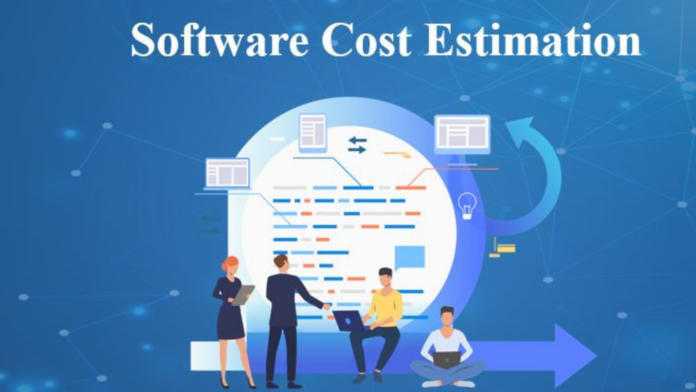Regarding modern contracting work, an estimate app can be a powerful tool that revolutionizes your business operations. For those in the home improvement sector, integrating this software can take the headache out of quotes and budgeting. The technology not only simplifies your estimation process but also contributes significantly to effective cost control.
Features You Can’t Ignore
Real-time data access for quotes and materials is a huge advantage. Imagine a client calls you while you’re on another job site. You can instantly pull up material costs and labor estimates right from your phone.
Seamless integration with existing accounting software brings another layer of efficiency. Gone are the days of manually entering data from one system to another. Your estimate app should make it easy for you to sync data with whatever accounting tool you’re using, reducing errors and saving time.
Effective communication with your clients can make or break a deal. Features like direct messaging or even sending photos can elevate your customer service game. You can send a quick pic of a completed task for approval or address issues without back-and-forth emails or phone tag.
Streamlining Office Operations
Paper clutter and administrative chores can bog down your office. An estimate app can be the solution. It digitizes documents like quotes, invoices, and project timelines, making it easier to manage files and keep things tidy.
Workflow in a contractor’s office involves many moving parts. With the app, project managers, accountants, and even field teams can work more cohesively. You get simplified workflows where everyone is on the same page without having to juggle multiple software solutions or paper documents.
Time is money, especially in contracting. With an estimate app, you can save precious minutes by automating several tasks. The extra time you save isn’t trivial; you can invest it back into areas that matter. Maybe it’s staff training, perhaps it’s market research, but those minutes can fuel initiatives that you wouldn’t have had time for otherwise.
On-the-Go Accessibility
One of the big perks of modern estimate apps is their mobile features. When you’re out on a job site, you don’t have to call back to the office to check on materials or pricing. Everything you need is right there on your phone or tablet.
This kind of real-time access is invaluable. Let’s say a client wants to make a last-minute change to the project. You can immediately assess how that affects costs and timelines, helping you make decisions that are both quick and well-informed.
Now, we know that not every job site has reliable internet. That’s where offline capabilities come into play. A good estimate app will allow you to access critical information even when you’re out of range. Once you’re back online, all your offline work syncs up automatically.
What this means is you’re never truly “disconnected” from your business operations. Whether you’re in the office or on the road, you have what you need to keep projects moving smoothly. This level of accessibility isn’t just convenient; it can be a real competitive advantage.
Fine-Tuning Your Estimates
Getting your estimates spot-on is crucial in the home improvement business. You don’t want to overcharge and lose a client, nor do you want to undercharge and erode your profits. A good estimate app can help you balance this tightrope.
Accuracy starts with up-to-date information. Estimate apps are designed to update in real-time or close to it. If the price of lumber spikes, your app should reflect that change, helping you adjust your quotes on the fly.
But it’s not just about reacting to immediate changes. The app also serves as an archive of your past estimates. This information isn’t merely a record; it’s a tool for constant improvement.
Data analytics features within the app can help you with that. They can analyze trends over time, pinpointing where you might be consistently over or underestimating. This kind of insight can be a roadmap for refining your future estimates.
Making the Switch – How to Implement an Estimate App
The decision to integrate an estimate app into your business operations can be transformative. It modernizes your approach and can lead to significant efficiency gains. Before jumping in, it’s essential to have a plan for a smooth transition.
Begin by evaluating your current processes. Understanding how estimates are currently made will highlight the gaps an app can fill. Once you identify those gaps, you’ll have a clearer vision of what you need from the app.
The market is flush with different estimate apps, each with its unique features. Look for an app that aligns well with your specific needs. Does it offer real-time updates? Can it integrate seamlessly with your existing accounting software?
Once you’ve made a selection, prepare your team for the change. Training is crucial. Staff should feel comfortable navigating the app’s features so they can use it effectively. Multiple training sessions might be needed to get everyone up to speed.
After everyone’s trained, do a soft launch. Run the app alongside your existing methods to identify any hiccups before you fully commit. This dual approach allows for immediate corrections.
After full implementation, don’t just set it and forget it. Technology evolves, and so will your business needs. Schedule periodic reviews to assess the app’s performance. Are there new features that could be beneficial? Are there aspects of the app that are no longer serving you well?
Conclusion
Integrating an estimate app is more than a mere operational update; it’s a strategic move that sets your business on a path toward greater adaptability and efficiency. The initial investment in time and training can be substantial, but the long-term benefits are worth it. With the right approach to implementation and ongoing review, this tool has the potential to revolutionize how you do business.

